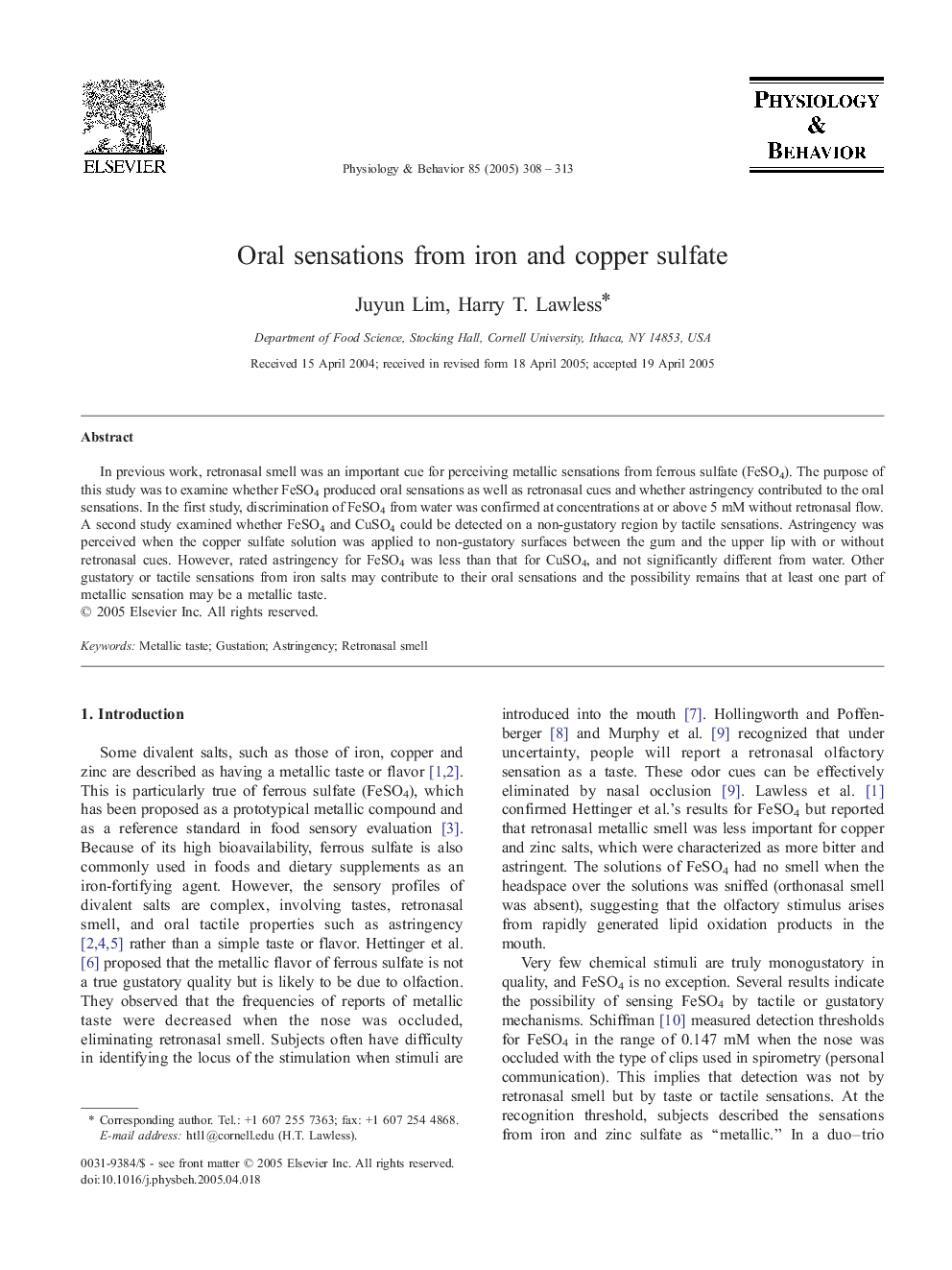| Article ID | Journal | Published Year | Pages | File Type |
|---|---|---|---|---|
| 9149704 | Physiology & Behavior | 2005 | 6 Pages |
Abstract
In previous work, retronasal smell was an important cue for perceiving metallic sensations from ferrous sulfate (FeSO4). The purpose of this study was to examine whether FeSO4 produced oral sensations as well as retronasal cues and whether astringency contributed to the oral sensations. In the first study, discrimination of FeSO4 from water was confirmed at concentrations at or above 5 mM without retronasal flow. A second study examined whether FeSO4 and CuSO4 could be detected on a non-gustatory region by tactile sensations. Astringency was perceived when the copper sulfate solution was applied to non-gustatory surfaces between the gum and the upper lip with or without retronasal cues. However, rated astringency for FeSO4 was less than that for CuSO4, and not significantly different from water. Other gustatory or tactile sensations from iron salts may contribute to their oral sensations and the possibility remains that at least one part of metallic sensation may be a metallic taste.
Related Topics
Life Sciences
Biochemistry, Genetics and Molecular Biology
Physiology
Authors
Juyun Lim, Harry T. Lawless,
